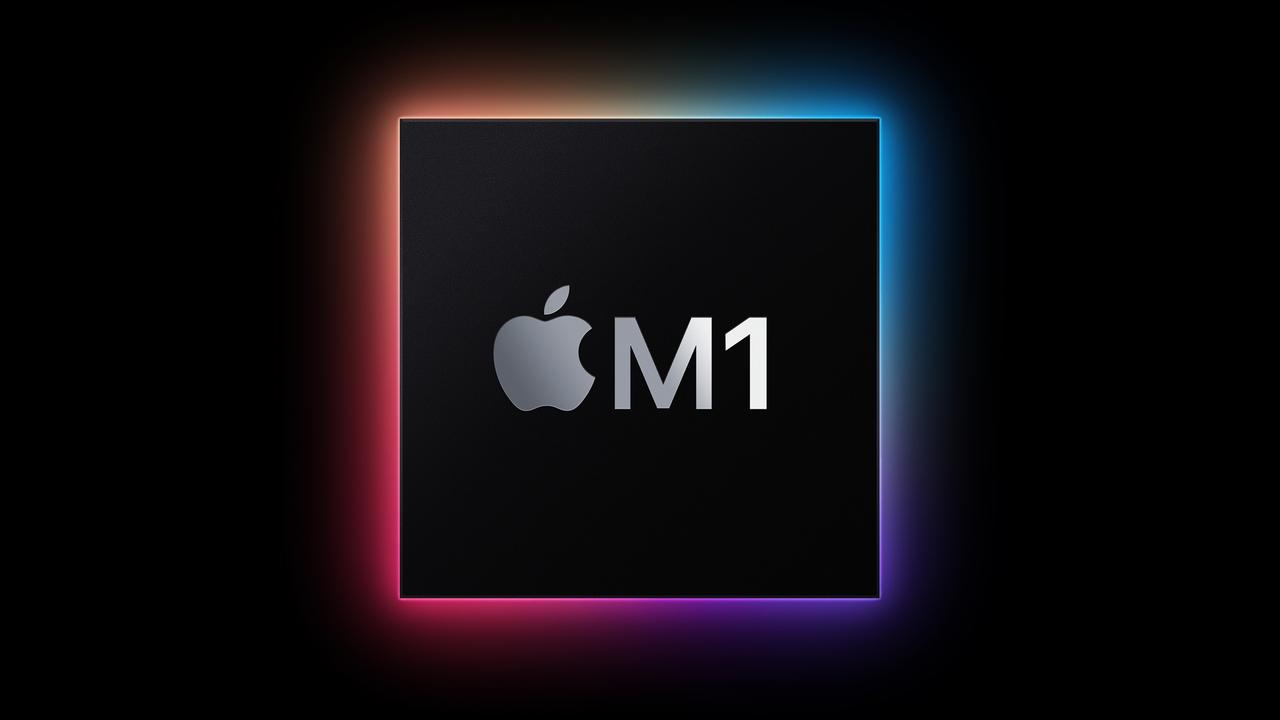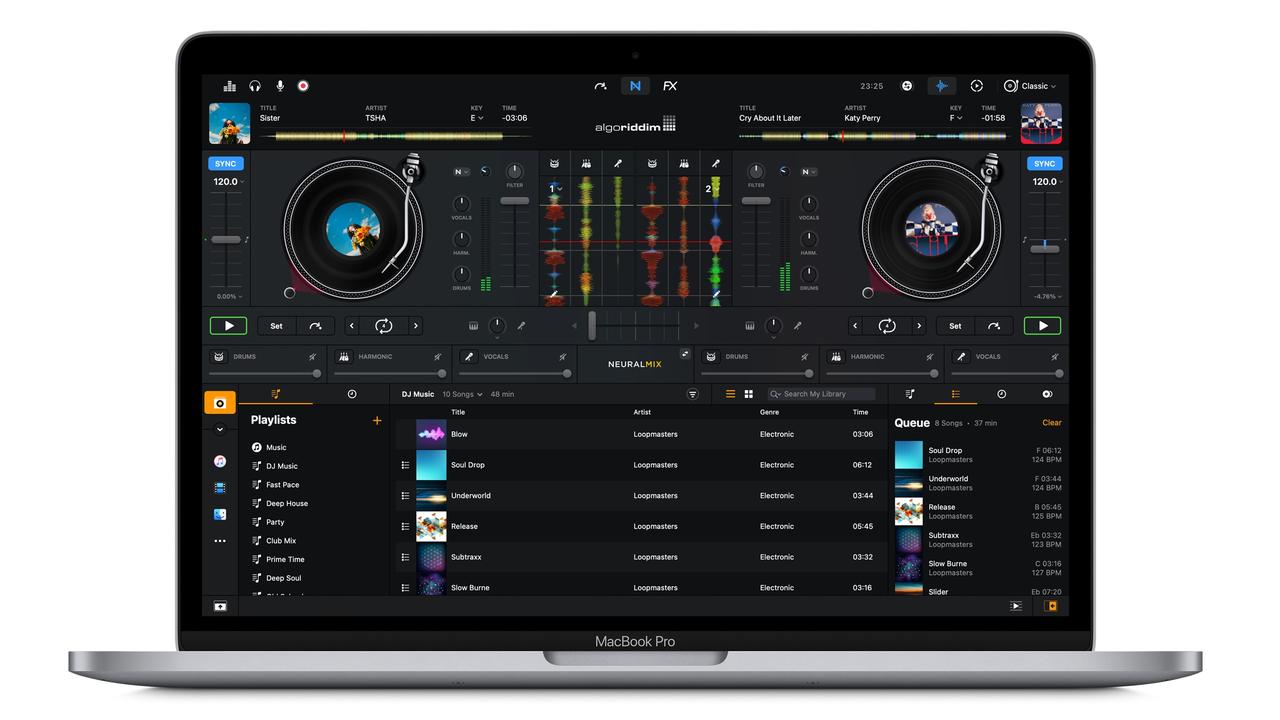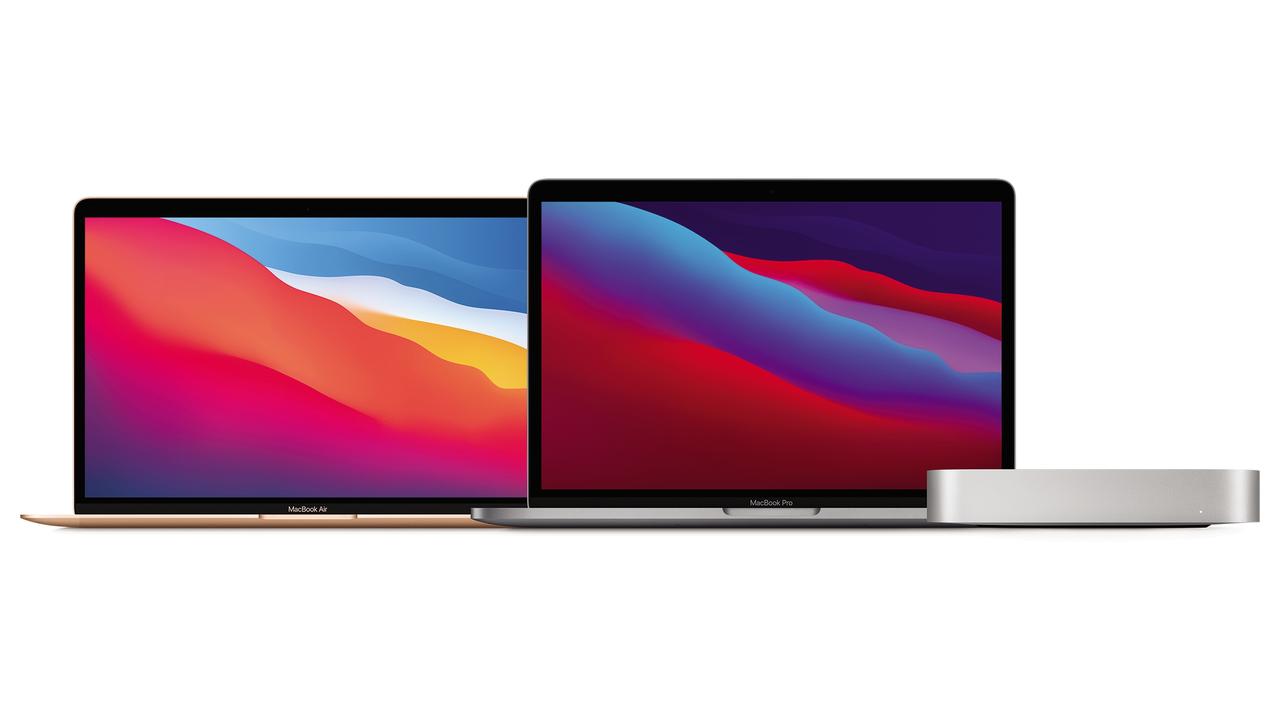Apple MacBook Pro 2020 review: Apple’s M1 chip meets the power and battery hype
It boasts a new M1 chip and extra battery life. But fans of Apple will be disappointed that the new MacBook Pro is lacking one key feature.
Too many tabs, not enough power: it’s one of the biggest reasons to rage against machines.
You open important websites, fully intending to read them later, until you find your status bar teeming with so many tiny tabs your Mac is hurtling inevitably towards that spinning, rainbow ring of doom.
So when Apple announced the arrival of its new computer chip — a chip promising more than twice the computational grunt and up to five times the graphics performance of its predecessor — it looked like website hoarders might get an unexpected saviour.
But can the M1 chip inside the new MacBook Pro deliver enough power to let users find that one useful tab among dozens?
And will it also allow 4K editing, RAW-file rendering, and high-res gaming without overheating and taking our tabs with it?
We powered up Apple’s new 13-inch monster and spent five days pushing it to its limits to find out.
HOW MUCH EXTRA POWER?
Only a very select group of super nerds are eager to discuss computing architecture.
Most people just want to know if their favourite apps will open faster, and their web browser will support their growing tabs habit.
But, in this case, it is important to know a little about what’s under the hood of Apple’s new MacBook.

Its M1 chip is comprised of eight processing cores — half for performance, half for efficiency — and eight graphics processing cores.
As the M1 uses a system-on-a-chip design, other parts of the computer like the RAM and neural engine are housed in the same small area. In theory, this design is more efficient, causes less duplication, and can deliver more power.
Testing this chip with Cinebench software, which simulates a host of everyday tasks you might perform with this computer, delivered pleasing results. The entry-level, $1999 MacBook Pro, with 8GB RAM, outperformed its 16-inch MacBook Pro peer with an Intel Core i9 chip.
But what does this mean for real-world use?
This machine offers extra speed you’ll notice in everyday tasks. Tap any of the apps preloaded to this MacBook and you’ll notice they appear moments before you expect them them to load.
This laptop is also highly responsive when sliding between homescreens, revealing all the open apps on a crowded screen, and juggling multiple tasks.

And, just as promised, it will handle some of the most demanding computer programs.
I loaded 100 RAW image files from a 24-megapixel camera into Adobe Lightroom on this Mac and was able to preview filters in real time, quickly scroll through images, and export the final high-res jpgs in less five seconds each (and often just three seconds).
Admittedly, this task did make the computer warm to touch despite its fan’s efforts but it didn’t slow down, nor did it pause.
HOW MUCH EXTRA BATTERY?
The battery boost delivered by Apple Silicon will mean bold business travellers can leave its bulky charger at home.
All-day battery used to be defined as 10 hours (and confined to iPads) but Apple promises double that figure from the MacBook Pro, assuming you’re using that time to play videos offline.

If you’re connecting your laptop to the internet (and of course you are), Apple offers the more realistic expectation of 17 hours — still an extra seven hours over the previous model.
Happily, this is no exaggeration. We eked out 17 hours from this computer while performing everyday, CPU-friendly tasks, including opening tab after tab.
It means you can fire up this laptop, check all your email, read the latest news, scan enough posts on social media to be angry at the world, and still have a computer that is 98 per cent charged.
Demanding apps do impact that figure, however. Lightroom taxed this system hard enough to chew through the battery faster than normal. If you’re planning to use big programs on your business trip, a cable still might be good insurance.
WHAT ABOUT OLD SOFTWARE?
There aren’t many third-party apps that have been retooled and optimised for Apple’s new chip yet.
Even programs from Adobe — including Lightroom that promises to be first off its rank — are yet to be reworked to make the most of the M1 chip.
That means that the speed of these programs is likely to improve in future.
It also means these apps need an Apple emulation program to run right now, and it’s called Rosetta 2.

As a Mac veteran with many legacy downloads (including a basic word-processing program I use daily), I was legitimately concerned about how supportive and fast this system would be.
Mercifully, there have been no hiccups so far — none of my old downloads appear to be slower under the new system, and all are accessible for longer thanks to that battery boost.
Eventually, Apple will stop supporting these programs based on Intel architecture, of course, and that could be a troubling time for some developers and users. It’s not likely to happen for at least a couple of years, however, and most will hopefully make the leap.
WHAT’S MISSING?
Some people had hoped to see an independent internet connection in the new generation of MacBooks; a sneaky eSIM to make the most of all that extra battery power.
Sadly, it didn’t eventuate in the smaller MacBook Pro or the MacBook Air, which are the two most likely candidates for such an addition.
There’s also no redesign or touchscreen in these new M1 Macs, even if they will be able to use iPad and iPhone apps, and their built-in cameras only received a software rather than a hardware boost.

MacBook Pro aficionados might also notice a change in the top model 13-inch model: it no longer offers four USB-C ports but only two. It’s not clear why they were omitted in this refresh.
M1 MACBOOK PRO VERDICT
This machine represents a promising start for Apple Silicon.
While the new 13-inch MacBook Pro looks the same as the model before it, it’s noticeably faster when completing everyday jobs, quicker to tackle bigger tasks, and really does light up the moment you open it, like a fridge door. Its benchmark tests back up these findings.
But the most notable change in this notebook — and perhaps its biggest selling point — is its battery life. Seventeen hours away from a power plug will be very convenient for travellers, and is useful even if you’re using this laptop on the couch, 2020-style.
More cautious users may still choose to delay an upgrade while apps are optimised for Apple’s M1 chip, but those struggling with too many tabs on an Intel machine could find a solution and a little less rage here.
MORE NEWS
Xbox Series X vs. PlayStation 5: the verdict
Why e-bikes sales have doubled in Australia
Apple’s biggest and smallest iPhone 12 models reviewed
Originally published as Apple MacBook Pro 2020 review: Apple’s M1 chip meets the power and battery hype


